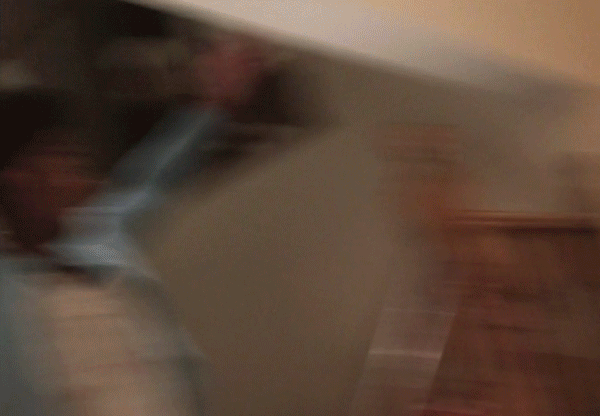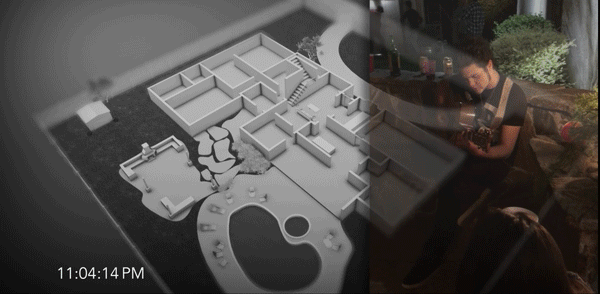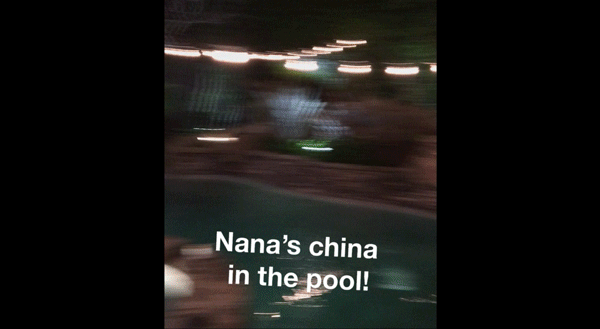
American Vandal: An Oral History of Nanas Party
As Emmy nominations approach, Vanity Fairs HWD team is once again diving deep into how some of this ..
As Emmy nominations approach, Vanity Fairs HWD team is once again diving deep into how some of this seasons greatest scenes and characters came together. You can read more of these close looks here.
The Scene: American Vandal Season 1, Episode 5, “Premature Theories”
Two years after escalating the true-crime fad with the docuseries Making a Murderer, Netflix decided it was time for a little self-mockery. The parodic American Vandal had all the elements of a modern-day, peak-TV true-crime story: 10 episodes, elaborate crime-scene recreations, somber music, and intimate access to the crimes major players. The crime itself, of course, has become a rallying cry for the shows legion of fans: Who drew the dicks?
“Created” and “directed” by Hanover High School sophomore Peter Maldonado, in association with the schools TV department, American Vandal investigates the titular misdeed: the phallic imagery that an unknown vandal spray-painted onto 27 different cars in the schools faculty parking lot. Like the real true-crime sensations before it, Peters documentary gradually becomes a meta pop-culture phenomenon. As the show wears on, leads pour in over Twitter; a teacher gets fired for what he said on camera; and, perhaps most importantly, Peter and his co-producer, Sam Ecklund, finally become popular.
Dylan Maxwell, the student widely believed to be behind the crime, also becomes a minor celebrity, and is eventually exonerated—though clearing his name comes with more complications than expected. When the shows first season ends, theres no clean resolution to the crime at its center, though a likely culprit has emerged—along with a funny, sometimes surprisingly touching portrait of teenage life in the Internet age.
The most realistic installment of all may be episode 5, “Premature Theories,” thanks to a showstopper sequence known simply as “Nanas party.” Leveraging his newfound fame and access, now that his documentary has gone viral, Peter painstakingly assembles social-media footage taken during a wild party thrown by one student at her grandmothers house. When stitched together, this inane collection of Snapchats and Facebook Lives—the kiss cam, the documentation of “Mings first beer,” the mocking of a kid who got his head stuck in the banister—inadvertently reveals a conversation between Dylan and his friends that initially seems incriminating. When that lead goes nowhere, Peter and Sam turn their attention to a red spray-paint can—“the murder weapon,” as they put it—pilfered from Nanas shed and later used to draw the dicks.
We spoke with the episodes actual director—American Vandal co-creator Tony Yacenda—as well as Jimmy Tatro, who plays Dylan, and co-writers Seth Cohen and Amy Pocha,—in an attempt to re-create the genesis of Nanas party in meticulous, Maldonado-worthy detail. They told us about arming an entire professional camera crew with iPhones, the extra who made a $4,000 mistake at the end of a 14-hour shooting day, and the tape of a real high-school party that inspired it all.
Much of American Vandal was inspired by true high-school stories from the shows writers room—including an especially huge party that took place in Framingham, Massachusetts, in 1999.
Tony Yacenda: The idea of Nanas party came from a staffing interview.
Seth Cohen: We interviewed, and they asked us, “Do you guys have any crazy stories from high school?” And we started pitching stories, and one of them was, “Well, there was this party called Nanas party. There was this girl whose grandmother went away, and she threw a party at her nanas house. Literally the entire school showed up. The house got destroyed—we broke the front door off. The cops came twice; windows were smashed; there were hundreds of people in the house. It went on for hours. And my buddy, he had video recorded it.” When we actually started working on the show, I said, “You guys have to see the real Nanas party.”
Yacenda: [Seth] did take the video of Nanas party into the writers room, and we watched it. It was, like, 1999 or something like that.
Amy Pocha: I feel like the real Nanas party was worse than whats on the show.
Cohen: We were like, “We have to tone it down. We cant afford that many extras.” There were actually people dressed as Nana; people found her 1920s cheerleader horn, and were playing with that, making announcements. It literally appeared in our yearbook: “Places we hung out: Nanas house.” From my point of view, and everyone else who lived through it, it was like, “This thing was crazy!” Anecdotal, super-fun-party-of-a-lifetime sort of way. And everyone else who watched [the video] was like, “Oh dear god, theyre in her clothes, watching this poor womans house destroyed.” I started to see it for the first time through other peoples eyes.
Jimmy Tatro: I think everyones been to a party thats kind of like that. Everyone probably has a specific name of a kid that pops into their mind that had a party like that. It just felt like a blast from the past.
Cohen: There are a number of scenes from Nanas party that mirror the video-tape footage. In the scene where they go, “Nanas home!,” with the guy walking down the stairs—thats ripped from the real video footage. Its to Tonys credit that he mirrored the real footage from the video. Its for like only a couple of scenes, but there are six people who are like, “Holy shit.”
Deliberately ridiculous as it is, American Vandal is intricately plotted, and the Nanas-party episode serves as a fulcrum for the season—coming close to exonerating the main suspect (Dylan) and introducing the so-called “murder weapon” in the can of spray paint that was used to draw the dicks.
Pocha: Our episode was really exciting, because it kind of tied everything together. We got to work in all of the other pieces at Nanas party, and see how everybody interacted.
Cohen: Once we came up with the idea of the spray-paint can and discovering the “murder weapon,” that became the engine for the story that would launch the next couple of episodes.
Yacenda: The premise of the show is two sophomores analyzing the social media of their upperclassmen, and this is the perfect example of that.
Pocha: We werent sure if we were actually going to be able to use specific social media, so we kind of made up our own filters. I tried to write in a way that they could crop the image, so it looked like Twitter but you werent sure it was Twitter, or it looked like Snapchat but you werent sure it was Snapchat. That feels like the way high school is documented now; there arent people making video yearbooks anymore.
Cohen: That was a lot of the discussion for most of the show: what kind of authentic, real way are kids documenting their lives?
Yacenda: We had our objective: O.K., we need to see them talking on the couch. What could this be? It could just be two girls playing with different Snapchat filters in the foreground, or trying to get a kid to drink a beer for the first time.

Pacha: As Peter was getting more popular and his footage went viral, hes getting more access to social media, because people start following you.
Yacenda: It was a rule of ours that there always had to be a strong reason why somebody would take that Snapchat, and then would save that Snapchat to their camera roll. That was our barometer.
Pacha: We have the guy playing guitar, singing the same song over and over again—the kind of humor that you would also find if you were given, like, 100 peoples high-school parties over social media.

Yacenda: There was a guy playing “Wonderwall” on the guitar, but we ended up not being able to afford that joke.
The party sequence was the productions “biggest page-count day,” which meant spending a lot of time and money to re-create a convincingly dumb high-school party—and then shooting the entire thing on cell phones.
Tatro: It was a very funny day, because its a full-on production, and all the vans are there—but when were shooting, its the camera operators holding iPhones, which just looked hilarious. Yacenda: Sometimes, we would have the actors operating their own phones; sometimes, its our camera team; sometimes, its myself. That shot of the kid in the banister—you can see my foot just kicking him to get a little reaction out of him. Its really just controlled chaos. It was our biggest page-count day. It was where we were spending a lot of our budget—but there was no video village or anything, because we were just shooting on real cell phones.
.gif)
Tatro: We kept doing takes of the same scene from different vantage points, so I knew what was going on to a certain extent. But I also didnt realize the importance of all the little things that were going on. When they said, “Make sure we can see you saying these words,” I didnt realize it was going to be so important. When I finally saw the way everything came together, I was blown away.
Yacenda: What we did, in addition to just general “party walla”—atmospheric sounds of all the kids talking—was we had a bunch of different people come in and film different sounds in 3-D space. Theres somebody screaming at this particular point in time, and somebodys spilling a drink at this other [point], somebody crashing a plate in another room at these specific times—so it didnt all just feel like just walla.
All of that stuff was also recorded on cell phones, so it sounded like it was coming from cell-phone speakers. And then we merge it all together, so that you cant really hear it, and you need the subtitles—but when you hear it with the subtitles, youre like, “Yeah, that seems like thats what they are saying.” That was the one day we were approved for a little overtime. I think we went 14 hours on that day.
Tatro: The party scenes are always . . . they can get a little exhausting. Those are the ones that everyone would assume are the most fun, but theres no music playing; youre just pretending youre hearing music. A lot of it is just pantomiming conversation, if youre in the background. The party scenes are never as fun as people think they are.
Yacenda: You know what happened at hour 14? Our very last shot was kids throwing Nanas plates and silverware into the pool, which is something that happened at the actual Nanas party. The last one, it hits one of the light bulbs that are hanging over the pool—and it shatters the light bulb and it goes in the pool. We had to drain all the water. That ended up being a $3,000, $4,000 mistake.

And of course, like a real true-crime series, American Vandal has inspired its fans to pick up on the tiniest clues—some of which were tucked away inside Nanas party.
Pacha: When people go back and watch, there are so many little Easter eggs in there that we eventually pull out. Even Van being there with Christa—things like that. There are little pieces that were all tied in on purpose.
Cohen: People are so smart. There is a continuity error, where in one episode, Christa Carlyle has a cast on one leg, and in another episode its on another leg. Fans found it; it was like, shes obviously lying. Everyone picked up on so many elements, and everyone luckily understood the genre, and the joke, and really seemed on board with what we were showing.
Yacenda: I really do love seeing the evolution of certain people, like Ming in that party [scene]. You see him after his first beer, and hes kind of an Easter egg throughout, where you can see him getting drunker and drunker. The reverse of Alex Trimboli keeping the same beer.
Tatro: The way they kept catching Trimboli talking about how many beers he had—that made me laugh every time. I knew what they were going for; I knew what was happening. I was pretty mind-blown seeing how it all came together. They were zooming in on us in the background, and then zooming in on another conversation—all the vantage points and graphics. I was so impressed by that scene. The only thing that would make me take a step back and start laughing were the Trimboli moments.
Get Vanity Fairs HWD NewsletterSign up for essential industry and award news from Hollywood.Katey RichKatey Rich is the deputy editor of VanityFair.com.Joanna RobinsonJoanna Robinson is a Hollywood writer covering TV and film for VanityFair.com.

